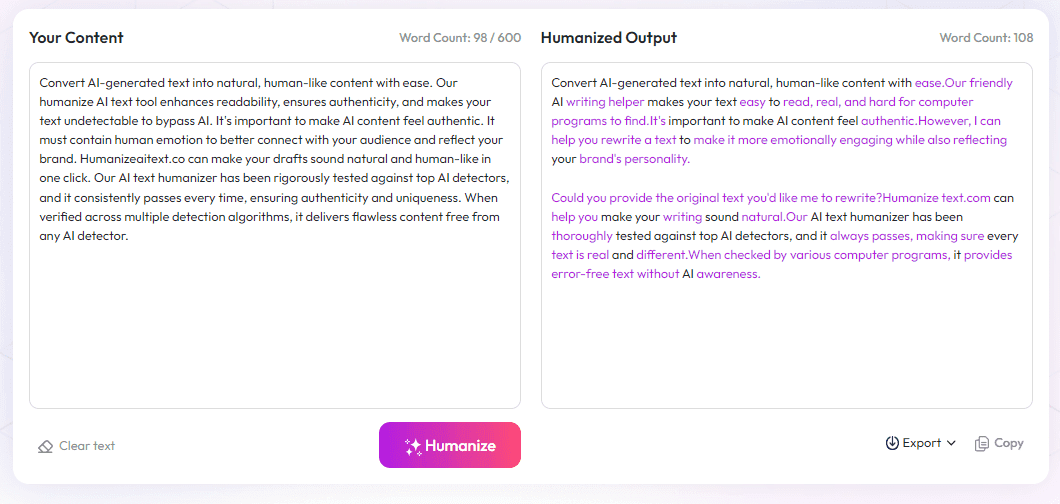Table of Contents
Many people wonder how virtual reality storytelling can boost how we connect with audiences. It can seem tricky to get right, and it’s easy to feel overwhelmed by all the tech talk. But don’t worry—you’re about to learn simple ways to use VR stories to grab attention and make a real impact.
Keep reading, and you’ll find out the best methods for creating engaging VR experiences and how different industries are using this technology now. Plus, I’ll share some easy steps to start making your own stories before exploring what’s next for VR storytelling.
Let’s explore how VR storytelling can become your new favorite tool, making your content more memorable and fun to experience.
Key Takeaways
Key Takeaways
- VR storytelling immerses viewers inside the narrative through 360-degree videos and interactive environments, making stories more engaging and memorable.
- Effective VR stories use spatial design and high-quality visuals combined with sound to evoke emotions and guide exploration naturally.
- Industries like marketing, education, entertainment, healthcare, and corporate training are using VR to create impactful, hands-on experiences that deepen understanding.
- Success relies on clear goals, simple interactions, authentic content, good pacing, and testing across devices to ensure comfort and engagement.
- Future trends include AI for personalized experiences, social VR for group stories, portable headsets, and data-driven content improvements.
- Getting started involves defining your story, choosing accessible hardware, creating small scenes, and gathering feedback to refine your VR experience.

1. How to Use Virtual Reality Storytelling to Engage Audiences in 2025
Virtual reality storytelling is transforming the way we connect with audiences by immersing them directly inside the story. It involves creating experiences using 360-degree videos or interactive environments that make viewers feel physically present within the narrative. This approach differs greatly from traditional storytelling, which relies on passive consumption of text, images, or video; VR allows the audience to look around, explore, and sometimes even interact with the environment. In 2025, the key to engaging viewers is designing stories that are not only visually captivating but also emotionally compelling, leveraging the full capabilities of immersive technology. As the VR market continues to grow—with global values expected to hit USD 20.83 billion this year and over 216 million users worldwide—there’s a huge opportunity for creators to craft memorable experiences. To truly capture an audience’s attention, focus on crafting narratives that utilize spatial storytelling techniques, where the environment itself becomes a narrative device, guiding viewers through the story naturally. For example, a documentary could surround viewers with virtual scenes from a social issue or a historical event, making them feel like they are walking through the moment, rather than just watching it unfold.
Another way to enhance engagement is by incorporating interactivity. When viewers can make choices or explore different aspects of a story, they feel more involved and invested. Consider integrating clickable objects, branching storylines, or challenges that compel users to participate actively. Success in 2025 also depends on understanding the user base—over 171 million VR users already exist globally—and designing experiences suited to their preferences. To boost the reach and impact of VR stories, keeping hardware limitations and user comfort in mind is vital; lightweight headsets and intuitive controls can make a significant difference. The payoff? An audience that is not just watching but experiencing stories firsthand, making emotional connections that last well beyond the VR session.
2. Key Techniques for Creating Effective VR Stories
Creating a compelling VR story requires mastery of several techniques. First, focus on spatial storytelling, where your environment naturally guides viewers and tells parts of the story through visuals and layout. For instance, placing objects or characters strategically can lead viewers to discover different narrative points as they explore. Second, develop a strong sense of presence by using high-quality visuals and realistic sounds, which help viewers forget they’re in a virtual space.
Next, leverage the emotional power of immersive environments. Songs, sounds, and visuals should work together to evoke feelings—whether awe, empathy, or suspense. Incorporating interactivity increases engagement; features like choosing a path or interacting with objects can make viewers co-creators of their experience. For example, in a VR conservation story, viewers might decide which endangered habitat to explore first, deepening their connection to the subject.
Another trick is pacing. Since VR can be physically and mentally demanding, breaking stories into digestible segments with pauses or varied environments helps avoid fatigue. Don’t forget to optimize your story for hardware capabilities; in 2025, with over 18% growth in AR/VR headset shipments, ensuring your content runs smoothly across different devices is crucial. Lastly, storytelling in VR benefits from authenticity—involving real stories, voices, and data to deepen trust and resonance. For example, authentic testimonials or real-time data visualizations can bring a documentary to life in virtual space.

3. Main Applications of VR Storytelling Across Industries
VR storytelling is finding its way into diverse fields, transforming how brands, educators, and entertainers connect with their audiences.
In marketing, immersive experiences allow brands to showcase products or tell stories in ways that captivate consumers and foster emotional bonds.
For example, real estate companies use VR tours to give potential buyers a walk-through of properties without leaving their homes, making the buying process faster and more engaging.
Education benefits hugely from VR storytelling by creating virtual classrooms, historical recreations, or science demonstrations that make learning interactive and memorable.
Imagine students exploring ancient ruins or conducting virtual lab experiments—they get a hands-on experience without the safety concerns or costs of real-world setups.
Entertainment is already reaping the rewards; VR is now a staple in gaming, with developers crafting narratives that put players inside the story for a truly immersive adventure.
Beyond games, VR storytelling is used in cinema, with some filmmakers experimenting with 360-degree films that viewers can navigate, making them active participants in storytelling.
Healthcare uses VR to aid in therapy, pain management, and training medical professionals, providing scenarios that are both realistic and controllable.
Even in the corporate world, VR is employed for training simulations, allowing employees to learn procedures in a safe, repeatable environment.
All these applications share one thing: they leverage the power of immersive storytelling to deepen understanding, increase retention, and build stronger emotional connections.
4. Best Practices for Successful VR Storytelling
Getting VR storytelling right isn’t just about flashy visuals; it hinges on a few solid practices to keep viewers engaged and comfortable.
Start with clear objectives; know exactly what emotion or message you want to convey and build your story around that core idea.
Avoid overwhelming the audience with too much information at once. Break your story into manageable chunks, especially given how VR can be physically demanding.
Make sure your environment supports natural exploration—position key story elements thoughtfully so viewers discover them intuitively.
Pay attention to audio design; realistic sounds and music add layers of emotion and help anchor viewers in the scene.
Test on multiple devices, because hardware compatibility remains a concern even in 2025. Use lightweight VR headsets for broader user comfort.
Encourage interaction where appropriate, but don’t force it. Give viewers the freedom to explore, but guide them subtly through visual cues or environmental design.
Authenticity matters—use real stories, voices, and data to foster trust and relatability in your VR experience.
Finally, gather user feedback early and often, then refine your story based on how actual viewers respond, turning feedback into improvements that resonate.
Practicing these tips will help you craft VR stories that captivate and stick with your audience long after they take off their headsets.
5. Significant Trends Shaping VR Storytelling in 2025
VR storytelling keeps evolving, and a few trends stand out as shaping the way content is created and consumed this year.
One big trend is the rise of AI integration, making VR environments smarter and more personalized; think virtual guides that adapt to user preferences or voice-controlled story interactions.
As AI tools grow in sophistication, storytellers can craft experiences that respond dynamically, creating a sense of agency and uniqueness for each viewer.
Another trend is the increasing importance of social VR experiences, where multiple users share a story in real-time, encouraging collaboration and shared immersion.
Platforms like (https://metaverse.fb.com/), and others, are making multiplayer virtual storytelling more accessible, expanding social interactions.
Content creators are also focusing on microlearning VR experiences, designed to deliver quick, impactful stories or lessons, perfect for on-the-go education or marketing.
Device innovation, like lightweight standalone headsets, is making VR more comfortable and portable, broadening who can access these stories without bulky setups.
Immersive marketing continues to drive growth, with brands investing heavily in branded VR experiences that blend storytelling with product demonstrations.
Finally, data and analytics are becoming more intertwined with VR storytelling, enabling creators to track user engagement and tailor content more effectively.
Staying ahead means keeping an eye on how AI, social VR, hardware advancements, and analytics influence the future of immersive stories—and adapting quickly.
6. How to Start Creating VR Stories: Practical Steps
If you're new to VR storytelling, getting started can seem daunting, but breaking it into clear steps makes it manageable.
First, define your story and goal—what emotion or message do you want to communicate? Focus your concept around this core idea.
Next, choose your hardware wisely. For beginners, standalone VR headsets like Oculus Quest 2 offer good quality without the hassle of complex setups. Want deeper control? Consider software like (https://unity.com/) or (https://www.unrealengine.com/), which are popular for VR development.
Start small: create a simple environment or scene that demonstrates your concept. Use free assets or 360-degree footage to keep costs down.
Learn about spatial storytelling techniques—think in terms of environment design, object placement, and camera movement in VR for narrative flow.
Incorporate clear interactions—like clickable objects or voice commands—that enhance engagement without overwhelming users.
Test your experience on different devices early and often—note how comfortable users feel and how intuitive the exploration is.
Gather feedback from friends or colleagues and make adjustments accordingly. This iterative process is key to polishing your VR story.
Finally, consider publishing on accessible platforms like (https://kdp.amazon.com/) for 360-degree e-books or VR-specific marketplaces to reach wider audiences.
Getting started may require a learning curve, but with patience and curiosity, you’ll be creating immersive stories before you know it.
FAQs
Use immersive environments and interactive elements to create engaging narratives. Focus on personalized experiences and emotional connections to capture audience attention and make stories memorable in VR environments.
Key techniques include spatial storytelling, use of realistic environments, directing user focus, and incorporating interactive choices. These methods improve immersion and keep users engaged throughout the experience.
VR storytelling is widely used in entertainment, education, marketing, and healthcare to create immersive experiences that inform, entertain, or train users more effectively.
Prioritize user comfort, keep stories concise, focus on clear navigation, and ensure visual quality. Testing with real users and gathering feedback helps refine the experience for better engagement.



